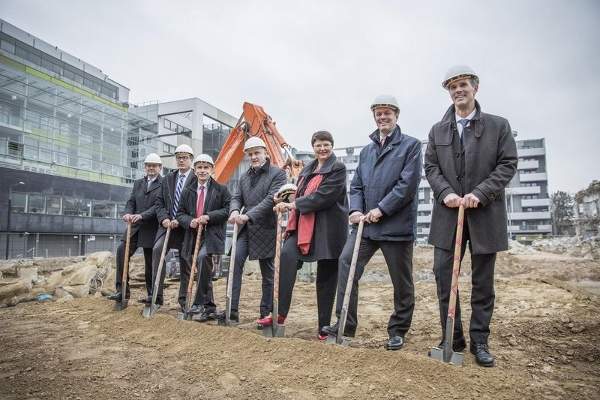The construction of a research facility for the Research Institute of Molecular Pathology (IMP) at the Vienna Biocentre in the third district of Vienna, Austria, fully sponsored by Boehringer Ingelheim, began in March 2015.
German pharmaceutical company Boehringer Ingelheim invested €50m ($54.53m) in the facility’s construction.
The building, opened in March 2017, is one of the world’s leading molecular biology research institutes.
Details of the Boehringer Ingelheim IMP facility
The IMP building has a 15,000ft² total floor space, a 14,945m² gross built area and a 66,854m³ gross built volume. It accommodates 250 researchers from 35 countries and will include sophisticated laboratories and office space.
The building includes a five-storey atrium, under which the office and laboratory areas are arranged. It houses a spacious lecture hall, server room, workshop and cafeteria.
A smooth glass facade stretches up the atrium from the ground floor to the fourth floor. The facade is transparent in the open areas. A bridge connects the facade to the neighbouring building so that the entire infrastructure is used.
The facility opens up possibilities to further develop the Vienna Biocentre in future. It is intended to bring about improvements in infrastructure, flexibility and new communication opportunities to achieve scientific results.
Research activities at the Boehringer Ingelheim research facility
The facility is used to carry out research in cell and molecular biology, neurobiology, disease mechanisms and computational biology. It is used for the discovery of fundamental molecular and cellular mechanisms underlying complex biological phenomena.
Research at the facility focuses on neural circuits in drosophila auditory perception and memory in the neocortex, spatio-temporal specificity of microRNA (miRNA) function, and stem cell commitment in the haematopoiesis circuit mechanics of emotions in the limbic system.
Research topics include symmetry breaking during cell polarisation, learning and memory in drosophila, in addition to the molecular basis of migration, molecular machines, and mechanisms of protein quality control and antibody diversification.
Other areas of research focus include systems biology of regulatory motifs and networks, molecular mechanisms of kinetochore function, mitosis and chromosome biology, and finding and probing cancer drug targets using advanced in-vivo RNA interference (RNAi).
Contractors involved in the project
The contract to design the IMP building was awarded to Austria-based company ATP architects engineers. The building construction contract was awarded to PORR, another Austrian company.
Sustainability profile of the facility
Constructed using building information modelling (BIM), the IMP building complies with environmentally friendly methods. It has a resource-saving energy concept to allow most of the energy used in the building to be recycled.






